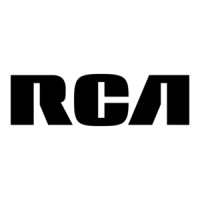C@ nect ons and S÷ u E
DVD recorder +TV+ Basic Cable Box
The back of
your TV
and/or Cable DVD
Box might recorder _
Iookdifferent _3_ _ ..........%0
than the ones £_
pictured here. _
OOT SVlOEOOUT
Cable Box
CABLEOUT
TV
)
CABLE/ANTENNA
I
S-VIDEO
S-VIDEO(
VIDEO L R
INPUT, _ _ _
INPUT2 _ _ _
)
)
Notes about cable boxes:
The connection diagram shown above reflects a basic setup. Since there are many different cable companies and types of
cables boxes, your cable box may come with a different recommended connection diagram. Normally, ANALOG cable boxes
are used so that the cable company can scramble the signal for premium channel programming (like movie channels). The
cable box will descramble the signal if you are a premium channel subscriber. In some cases, your cable company may not
scramble the signal for basic channels and the signal could be passed through the cable box so that you could receive the
signal with the DVD recorder.
There are also DIGITAL cable boxes that are relatively new and are used with digital cable service. Even with digital cable
service, analog signals are often carried on the same cable.
Using the connection diagram above, you won't be able to watch one program while recording another program. This may
be possible with a more sophisticated setup, using an optional signal splitter and A-B switch. We suggest you contact your
cable company for help in recommending the best setup for your situation.
If you connect your components as described, you must access different Video Input Channels on your TV to see
programming. If you don't know how to access Video Input Channels on your TV, go to page 20 for help. A general
explanation, based on the connection shown above, follows:
To play a disc: "lime die TV to its Input 1 cham/d or Vid I channd.
If you need help finding your TV's various Video Input Channels, go to page 20.
0 Graphics contained within this publication are for representation only

